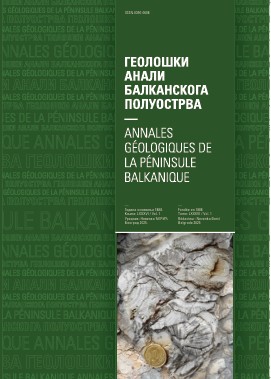The Bulog Formation in the type area (Sarajevo) and related Middle and Late Triassic open-marine sedimentary successions in the Dinarides of Bosnia and Herzegovina
Abstract
The type area of the Bulog Formation in the area of Sarajevo is revisited in order to solve the still open question of the palaeogeographic provenance of the type-section of the late Pelsonian-Illyrian Bulog Formation and other related Middle Triassic and also Late Triassic open-marine sedimentary sequences. We revisited the type-section and re-evaluated existing data from several known Middle Triassic Bulog Limestone-bearing successions and the Late Triassic Hallstatt Limestones around Sarajevo. Besides their uniform underlying, that are the Middle Anisian (Pelsonian) shallow-water limestones of the Ravni Carbonate Ramp we studied especially their overlying sedimentary sequences and compared these sequences with other related Middle-Late Triassic sedimentary successions in Bosnia and Herzegovina. In addition, we studied some new sections in the area of Sarajevo resp. Bosnia and Herzegovina to compare the type area in an over-regional scale. The result shows a parautochthonous position of the type-locality in the palaeogeographic realm of the later East Bosnian-Durmitor megaunit like several other related successions not only in Bosnia and Herzegovina, also in Serbia and Montenegro. The type-section of the Bulog Formation is overlain by limestones of the prograding Wetterstein Carbonate Platform that means the Bulog Formation was deposited in a central shelf area where later the Early Carnian Wetterstein Carbonate Platform and the Norian-Rhaetian Dachstein Carbonate Platform evolved. Other sections of the Bulog Formation in the area of Sarajevo belong to the dismembered Hallstatt Limestone succession that means they were transported from the outer shelf to their actual position during the Middle-Late Jurassic orogenesis. On the basis of these results and the end of a more than hundred years lasting controversial discussion the way is now open for 1) a stable lithostratigraphic nomenclature for the entire Triassic of the Inner Dinarides to at least the East Bosnian-Durmitor megaunit, and for 2) a reliable time-space reconstruction of the Middle Triassic opening history of the Neo-Tethys Ocean, and 3) a palaeogeographic restauration of the Dinaridic segment of the Triassic western passive continental margin of the Neo-Tethys. In addition, the ?latest Illyrian to latest Longobardian Grabovik Formation, deposited above the Bulog Formation and below the evolving Early Carnian Wetterstein Carbonate Platform, is emended and formalized. Furthermore, we demonstrate, that the dismembered Hallstatt Limestone succession derive from the outer shelf and is part of the allochthonous and far-travelled Zlatar (Hallstatt) Mélange overlain by an ophiolitic mélange, described here for the first time from the Sarajevo area.
Copyright (c) 2025 Geološki anali Balkanskoga poluostrva

This work is licensed under a Creative Commons Attribution 4.0 International License.










